On December 12th, 2020, the final review of “Q-Village · Gangtou” International Young Designer Competition was successfully held in Guangzhou City, Guangdong Province. Gangtou Village in Huadu District, Guangzhou, which features unique regional characteristics and huge development potentials, is selected as the site for this Competition. The Competition takes “Q-Village • Gangtou” as the theme, center around enhancing the fun features of rural built spaces on the principle of minimal demolition and re-construction, and renovate traditional buildings to accommodate compatible functions and trades. Several renown scholars, architects, designers and architectural educators were invited as juries for the review session. After several rounds of evaluation, the result was finalized.
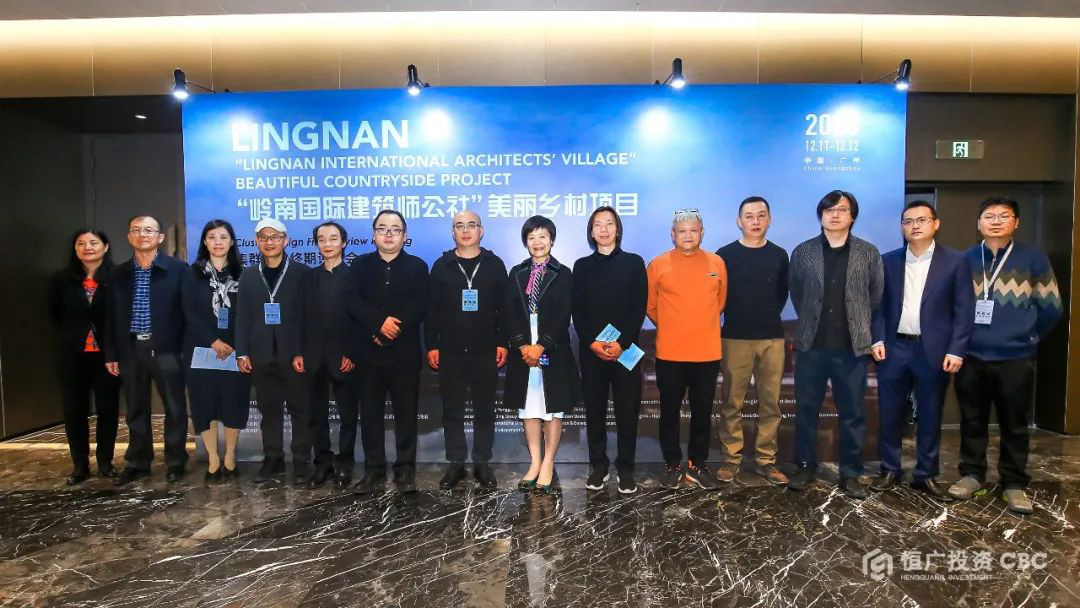

As a 600-year old traditional village in Huadong Town, the general layout and building form of the ancient Gangtou Village, together with its unique harbor-style idyllic view, are well preserved till today, making it an “open-air museum of Lingnan architecture”. With the promotion of rural revitalization strategy, Gangtou Village is looking for industries suitable for its own development based on the unique Lingnan culture, discovering and creating the spatial value of the ancient village, and creating a demonstration village of beautiful countryside with Lingnan characteristics.
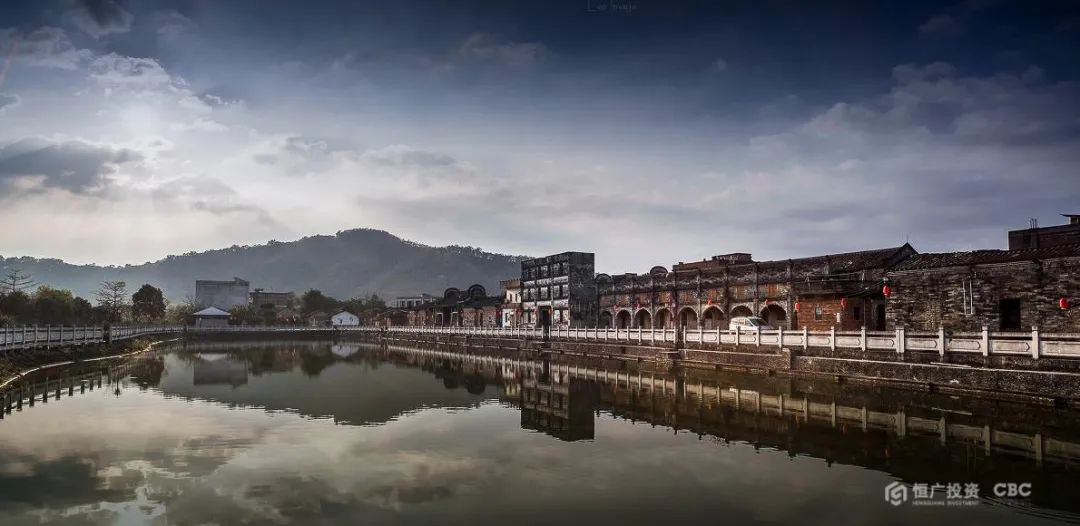
In this context, “Q-Village · Gangtou” International Young Designer Competition was initiated. Participants are welcomed to take local Lingnan culture as the starting point, and implant their design into the original village in the most humble way, so as to revive the village with the power of design, find the lost cultural memories in the continuation of rural life and aesthetics, and rebuild the self-confidence of rural culture.
Hundreds of students and designers from institutions all over the world participated in the competition. 1 first prize, 3 second prizes, 8 third prizes and 24 honorable mentions were selected. The project Outside the corridor · Inside the courtyard which is made by freelance designers Wu Siming, Peng Weisen and Cai Xinqian from Guangdong Province took the lead.
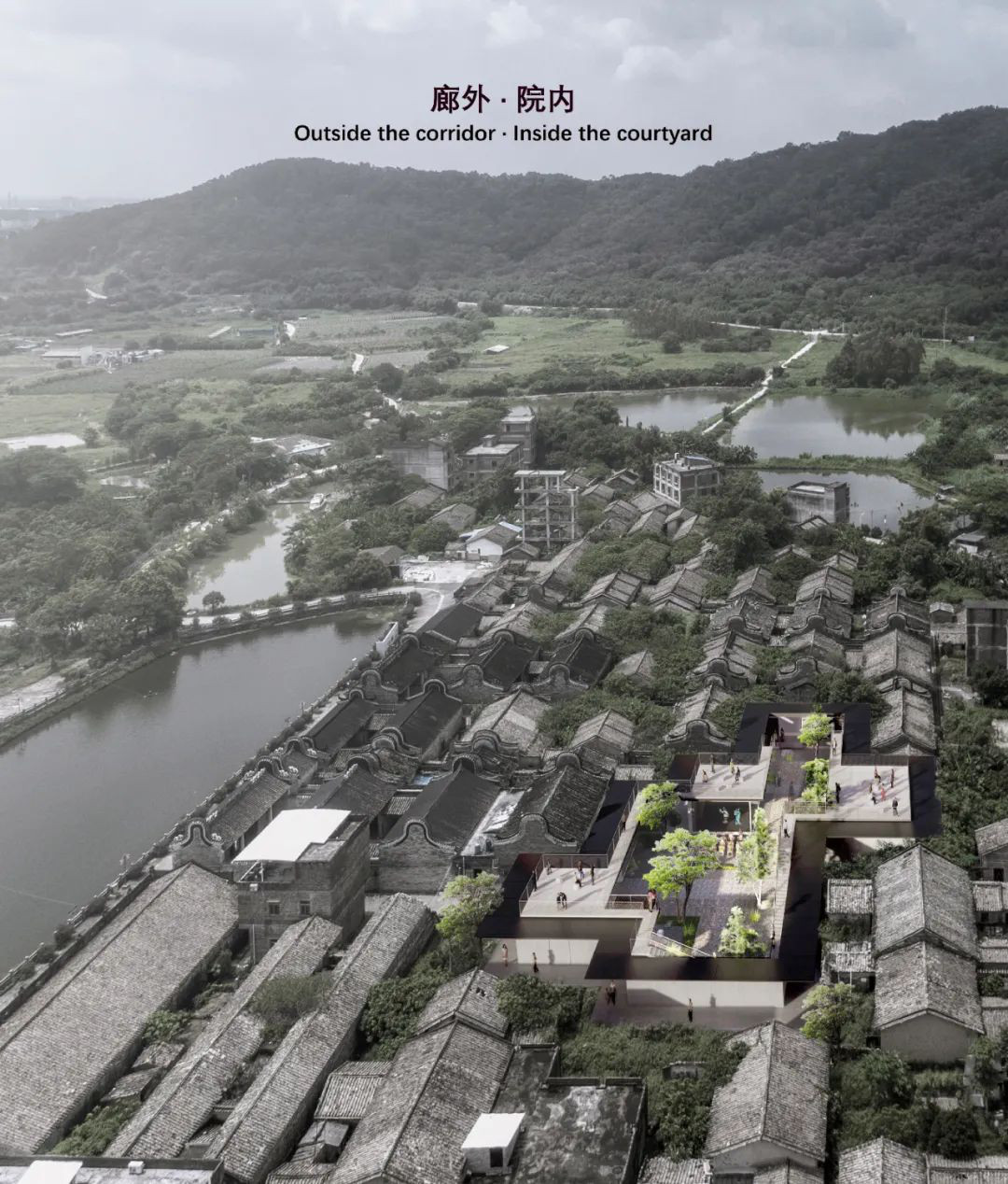

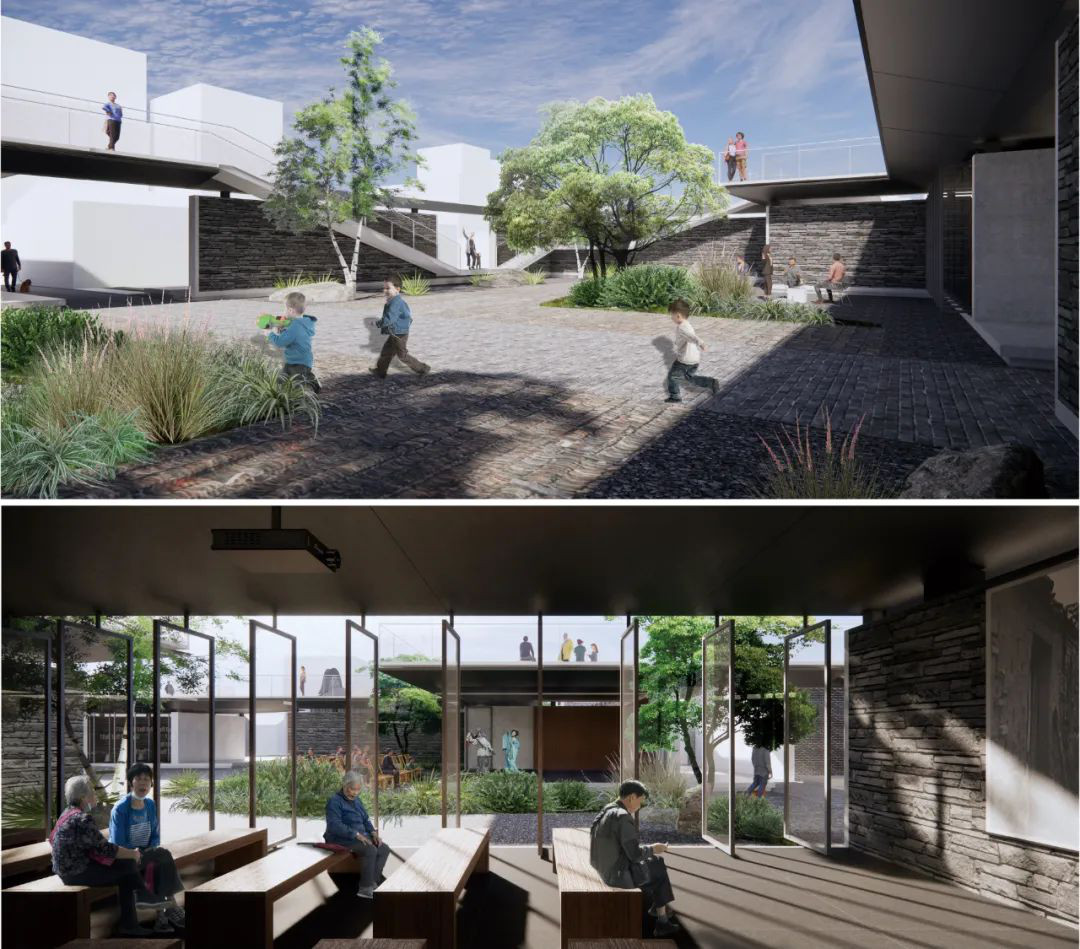
Design Interpretation: We chose the collapsed empty lot located at the center of the old village (No.5 lot) as our site. With the respect of the historical legacy, we try to integrate modern design languages into the local culture, and its economic and social needs. By adding new functions to this community center in the old village, we aim to revitalize the village in every aspect.
There are two parts in the design: a recreational looping pathway, and an inner courtyard.
While keeping the existing north-south axis of allies, a main recreational looping pathway is inserted at the center of Gangtou Village. A sectional L-shaped is adopted in the design strategy to respond to the immediate context- the historical buildings. Using the pathway as a holder of the display and the historical buildings as the display, a new relationship is then established in between visitors and historical buildings. The folding doors of the three box-shaped space can be completely open when the weather is nice. The interaction and interplay between indoor and outdoor create various daily activities for residents, making courtyard the catalyst of community events.
ZHU Xiaodi
The design of Outside the Corridor, Inside the Courtyard in the scheme has well adopted the concept of mutual transformation and interdependence between internal and external spaces in traditional Chinese culture, connected the functional organization of the open space though strict structure of Cantonese dwelling layout in the south-north direction and the widths of different courtyards linking in the east-west direction, and formed a space system of mutual transformation between the outside and inside as well as interaction between the ground and the air, which makes the activities in the old village become diversified and interesting. Villagers can also experience the effect of repeated transformation and collage from the past to the modern time through the complementary public space. The scheme attempts to implant new functions and new spaces in traditional villages, which is a beneficial innovation.
WANG Lu
The winning scheme selects the collapsed Plot No. 5 as the design location, and applies ingenious organization of the corridor and courtyard space, which brings a brand-new look to Gangtou Village. By adjusting and repairing the existing spatial relation and texture, the scheme embeds a new public level belonging to this era, awakens the silence of history in a new way, carries the memory of the past, and expresses the connection with the current world, which is really interesting and poetic!
BAO Li
The scheme handles the rebirth of ruins in the village in a poetic way, while respecting the scale and atmosphere of the original space. A penetrating and lightsome public garden is built in the dense texture, with the clear and simple construction means to show the times. It is an exploratory and experimental, current and on-the-spot scheme.
ZHANG Haiao
The scheme reflects an organic combination of new and old space, and fully embodies the characteristics of Lingnan architecture style in terms of material selection and space feature innovation.
XIAN Jianxiong
Lots of collapsed and incomplete plot spaces exist in the traditional village, thus it becomes a common problem to realize full and rational utilization of these spaces. This scheme puts forward a good solution, which not only respects the traces of historical relics, but also adopts the flexible modern design language to offer more functional space for both villagers and visitors. The simple construction techniques and modern materials have formed a sharp contrast compared with the traditional dwelling, showing the old and the new as well as endowing the old village with new vitality.

Design Interpretation: The workshop is not only a place for the villagers to work and live, but also a window for the outside world to observe the development of the Chinese countryside. Figs are the main crops grown by the villagers of Gangtou Village. We hope to build a fig processing workshop to give the villagers of Gangtou Village greater economic income through the deep processing of figs. We reinterpreted the settlement texture formed by the comb-type layout of Gangtou Village to form 7 independent production workshops. The advancement and retreat of the workshops formed the virtual and real changes of the ancestral hall system. A series of small courtyards formed by advance and retreat were connected by arches. Shuttle between the courtyards forms a streamline for admiring the fig processing technology, making the workshop a showcase for the work of the villagers in Gangtou Village.
ZHU Xiaodi
The scheme makes full use of the existing old walls, hides the new building space behind the old walls, and forms a combination of line, space and volume with appropriate proportion, which has well handled the relationship between the new and the old.
XIAO Cheng
On the basis of fully understanding and protecting the current situation and texture of the village, the scheme inserts the new space with a prudent and appropriate attitude, and endows the buildings with new functions. While creating a new contemporary space, it has realized the most important part of the rural revitalization, which provides new employment opportunities and improves the quality of life for the local residents. It owns double value and significance both in architecture and sociology.
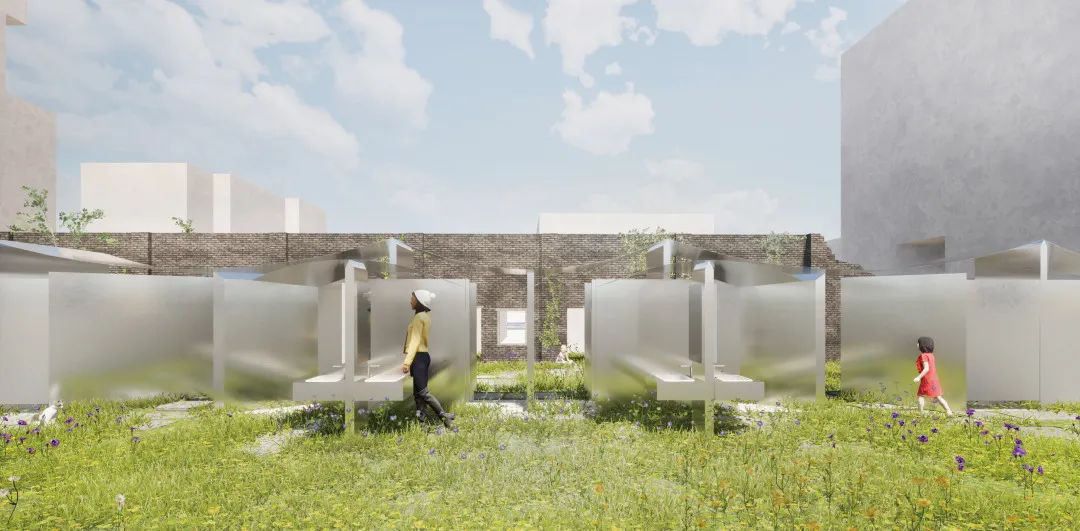
Design Interpretation: Gangtou Village, with its unique ancient village architecture and landscape, will be one of the best places for visitors to Guangzhou.When we examined some of these cases, we found that there is a feature that is used by almost every visitor, but it is most easily overlooked by developers and designers-public toilets. From the perspective of local villagers,receiving visitors with a clean and interesting public toilet wil be a way to enhance villagers' self-confidence.
LI Ji
A group of simple and small modern structures are inserted into an idled space by means of micro-intervention acupuncture in the scheme. Stainless steel materials and the old site together form an appropriate contrast, and the garden-experienced toilets also become a good complement to the village function.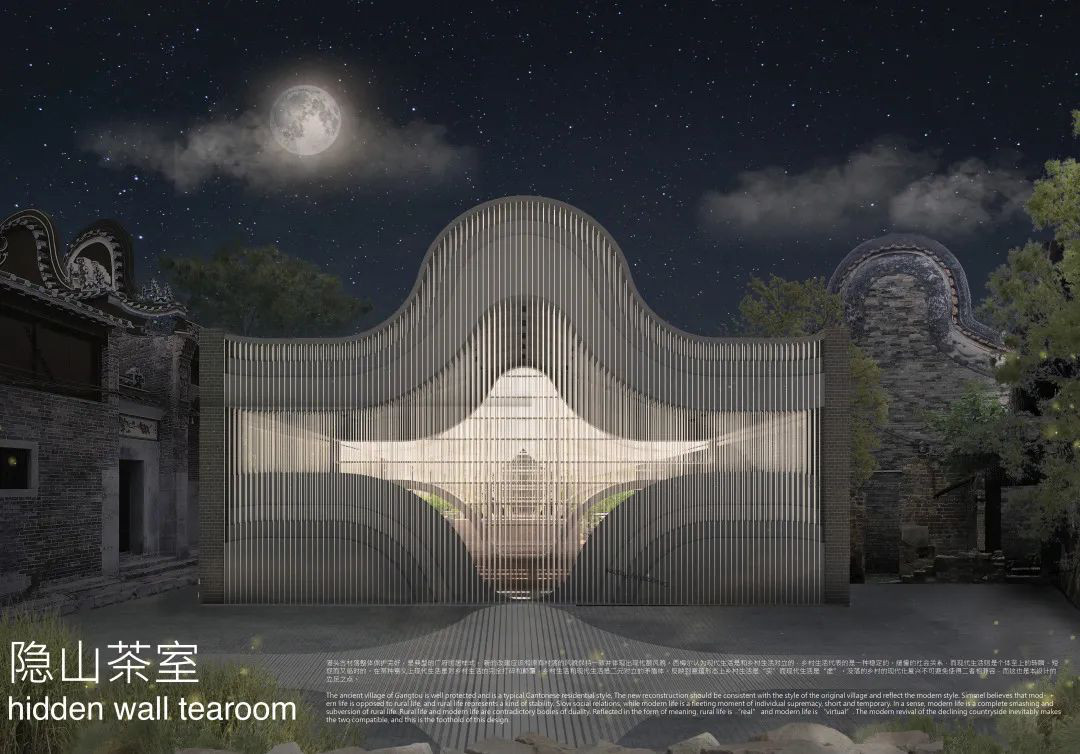
Hidden Wall Tearoom
Design Interpretation: This design attempts to combine the imaginary and the real, and intervene in the material structure of the ancient village with minimal reconstruction. Building 07 has a larger area and a more square space, which is very suitable for use as a public gathering space in the village. Therefore, this plan attempts to build a multi-function space that can host various public social and cultural activities. The lightweight structure is easy to dismantle and the roof movable outer protective structure can also be adjusted to make the space changing among indoor, semi-indoor and completely outdoor. The gable is re-abstracted from the village special gable, and the gable is made gradually treansparency, which weakens the weight of the concrete wall. At the same time, the gable also becomes a characteristic window connecting the internal space and the external natural environment.
HAN Yunfeng
The scheme is ingeniously conceived on its strategy as well as adoption of new materials and semi-transparent design forms, which expresses various forms and concept of strong modernity completely according to the outline and scale of traditional building debris. It is quite creative.

Third Prize Work|ROOFS: ReOccupation Of Forgotten Spirits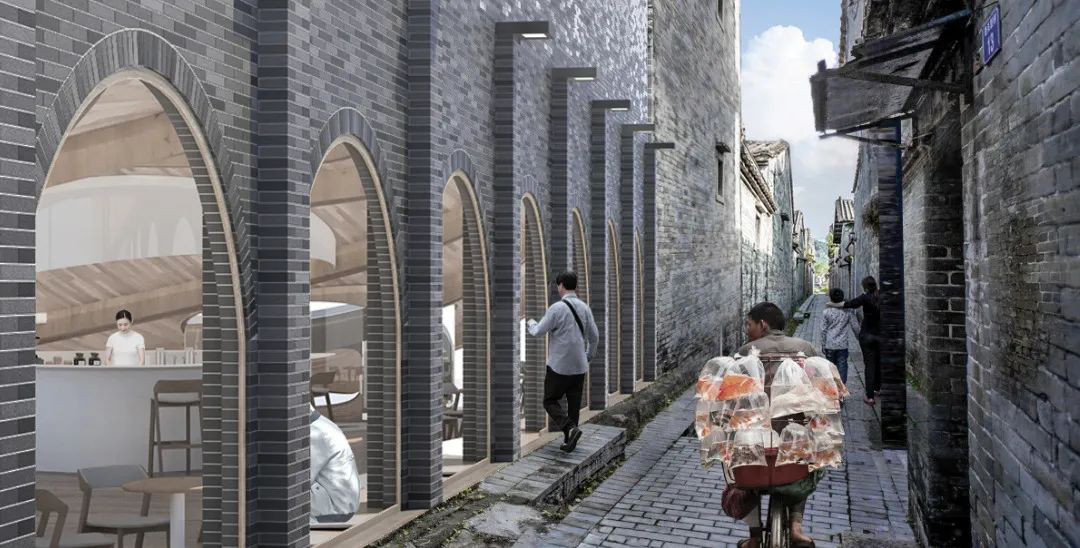
Third Prize Work|ROOF + WALL + HERBAL TEA + PARK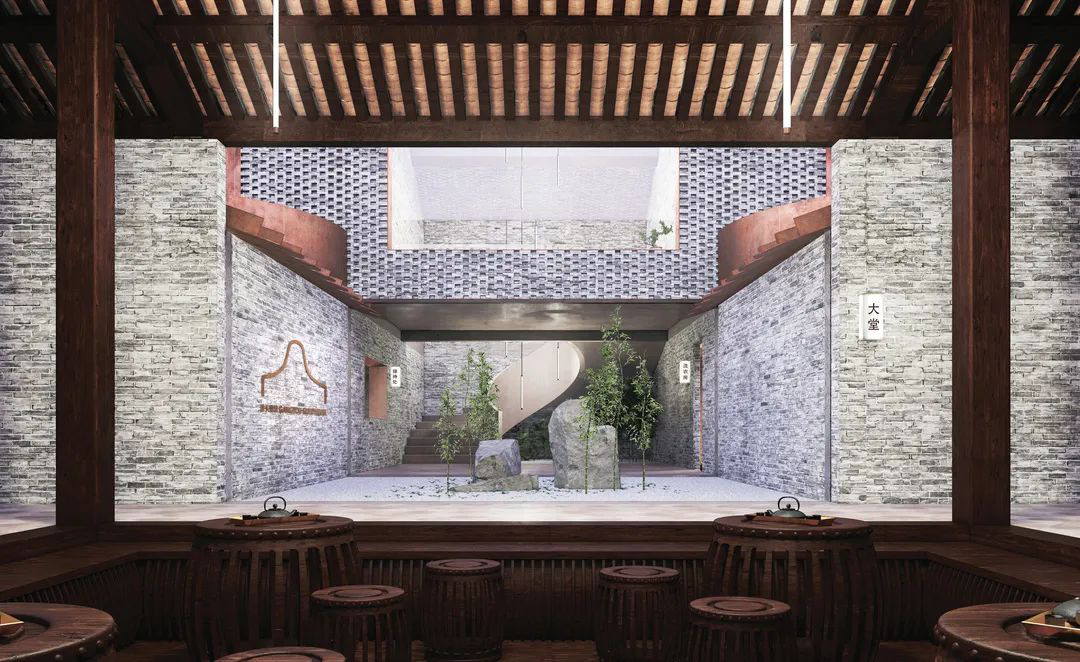
Third Prize Work|Gangtou Culture House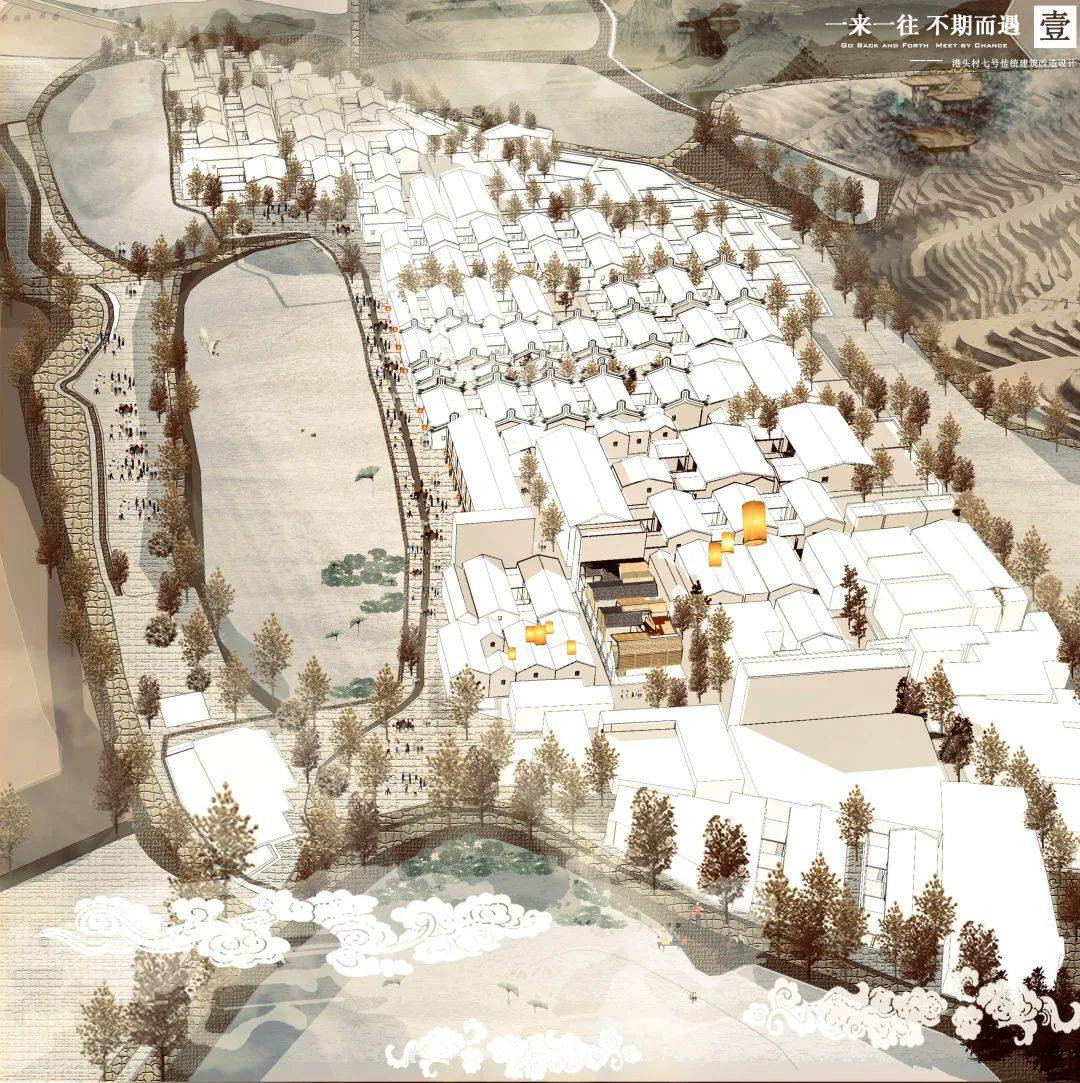
Third Prize Work|Go Back and Forth,Meet by Chance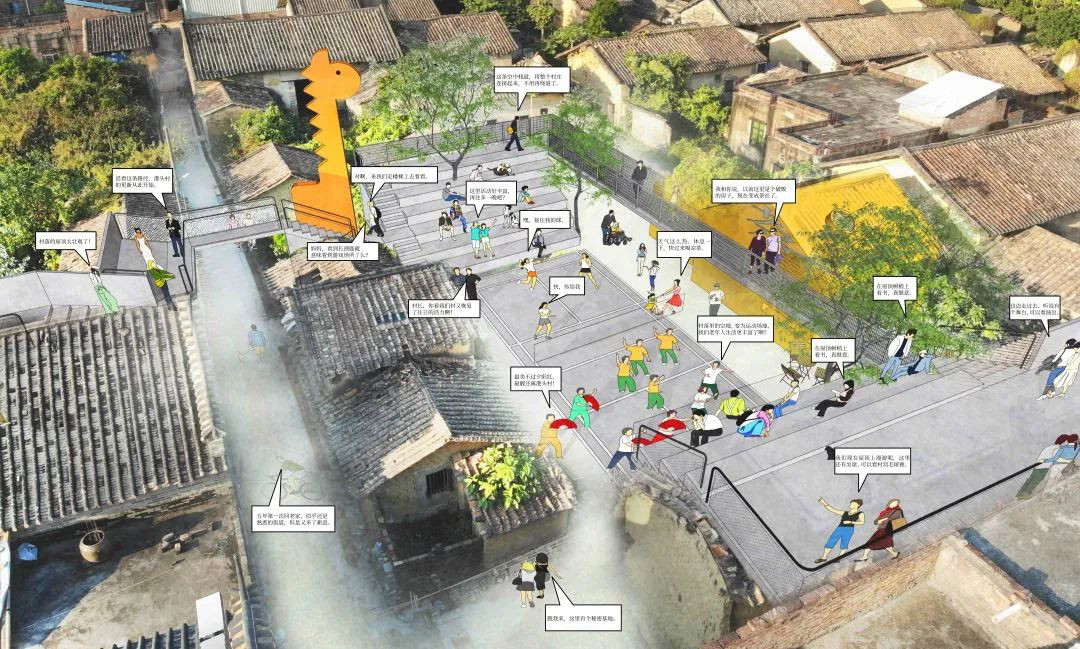
Third Prize Work|The Rooftop Bridge 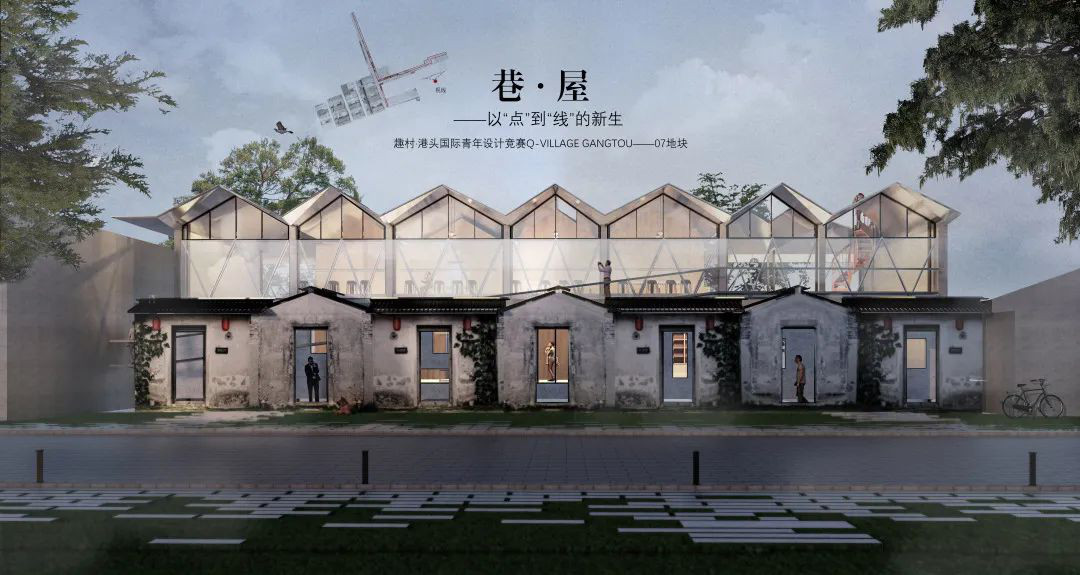
Third Prize Work|Alley and House -- a new life from "point" to "line" 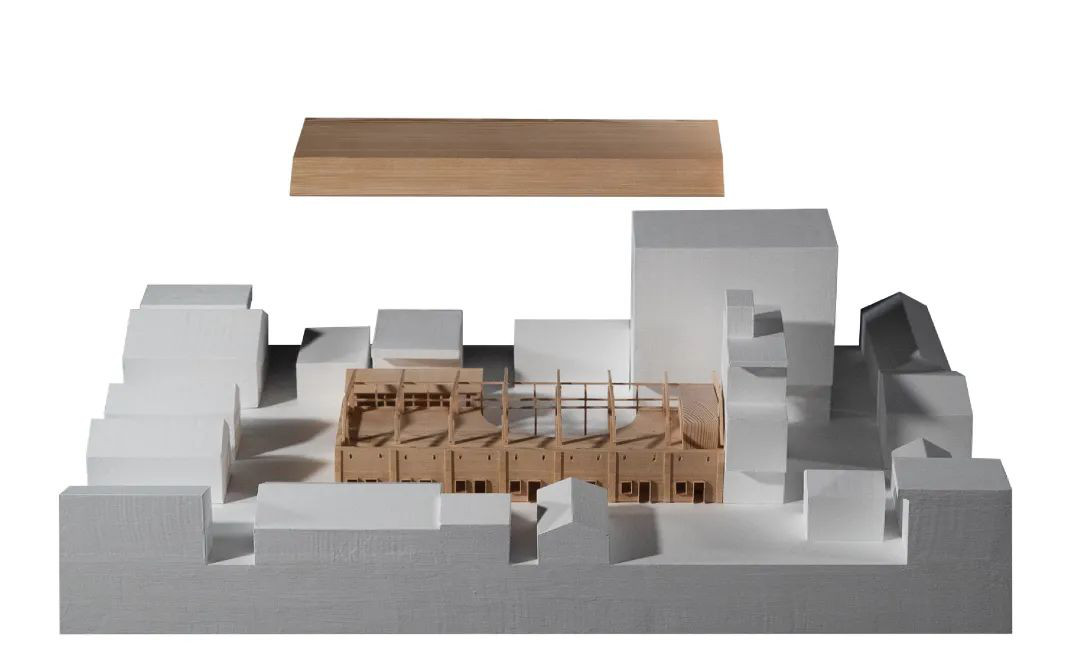
Third Prize Work|Q-Village food market / Gangtou 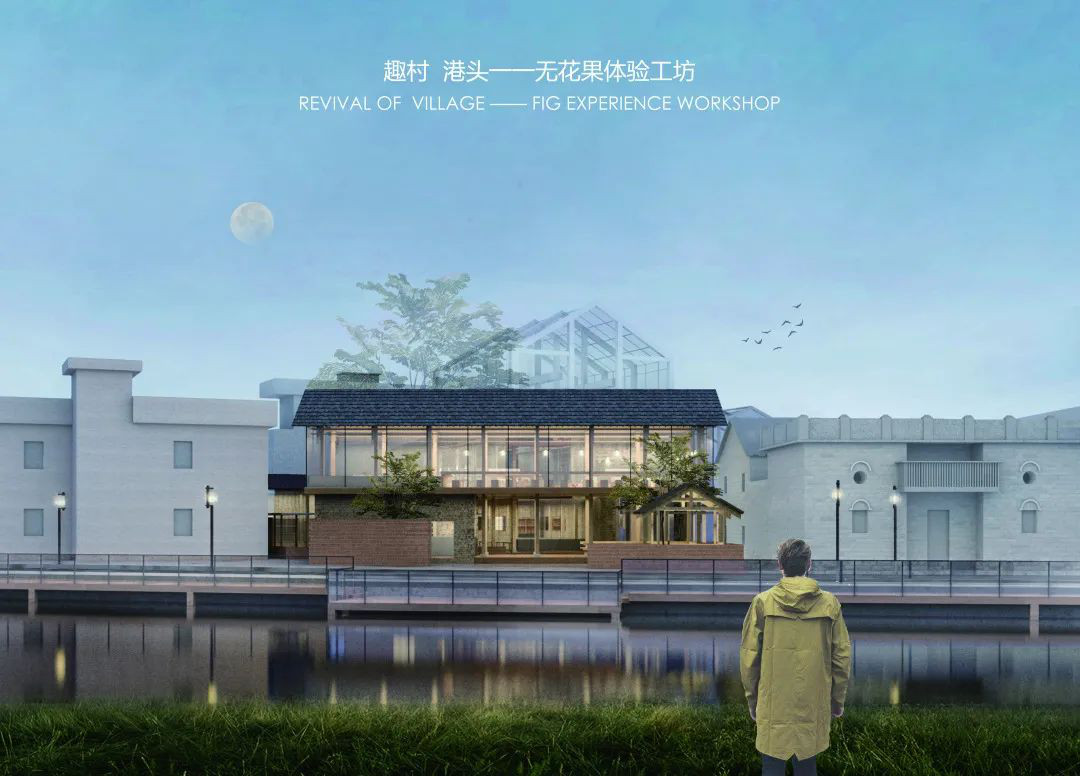
Third Prize Work|Revival of Village
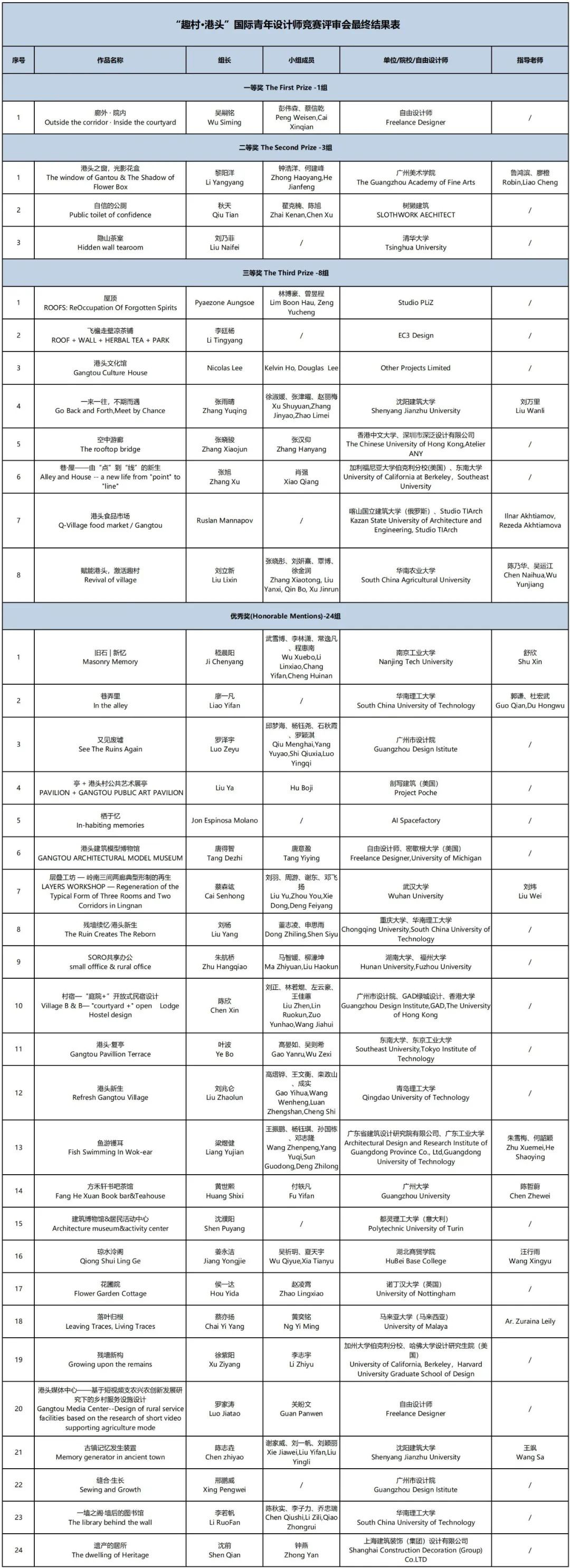
Congratulations to all the winning teams and individuals above!
A 600-year old traditional village in Huadong Town, Huadu District, Guangzhou, Guangdong Province, Gangtou Village covers a total land area of 2.83 km2. Facing the south, the village features a typical Cantonese dwelling layout that resembles a comb, which is known as “comb-style layout”. About 20,000m2 of ancient buildings of the Ming and Qing Dynasties and the Republican Period are well preserved in the village, including private houses, ancestral temples and ancient bridges, making it an “open-air museum of Lingnan architecture”.
Sponsors:Guangzhou Municipal Housing and Urban-Rural Development Bureau, Guangzhou Huadu District People’s Government, Guangdong Hengjian Investment Holding Co., Ltd.
Organizers:Guangdong Hengguang Investment Co., Ltd., CBC(China Building Centre)
Co-organizers:CPC Leading Group Office of Rural Revitalization Strategy Implementation of Guangzhou Huadu District Party Committee, Guangzhou Huadu District Huadong Town People’s Government
Academic support:International Urban and Rural Innovation & Development Research Center
Media support:Urban Environment Design (UED) Magazine
Chinese Mainland: +86 (0)10 56077246;
ZHANG Jingxuan +86 18600687329; zhangjingxuan@chinabuildingcentre.com
LONG Yiran +86 18600687323;longyiran@chinabuildingcentre.com
other countries or Hong Kong, Macao SARs and Taiwan:
Amy DONG +86 15389869269; dongjiarong@chinabuildingcentre.com Joy WANG +86 13189714339; wangjiayue@chinabuildingcentre.com
Official email: qvillagegangtou@chinabuildingcentre.com
Official website: http://qvillagegangtou.chinabuildingcentre.com